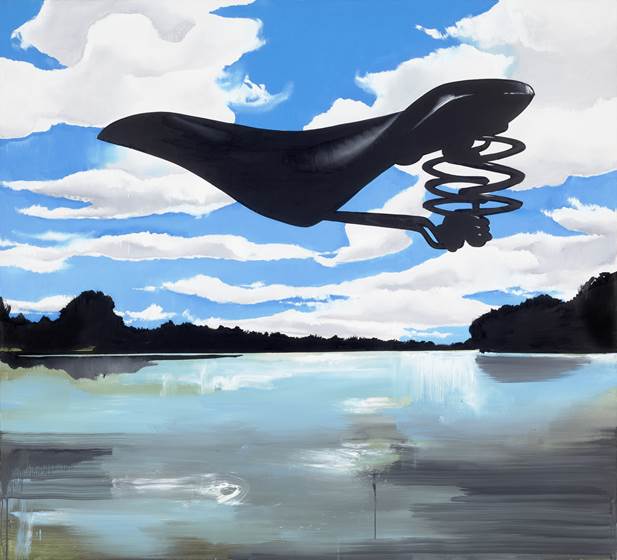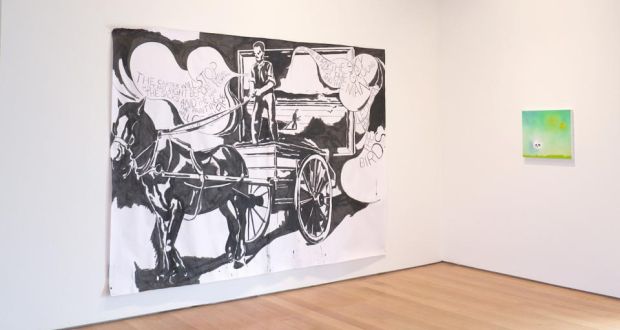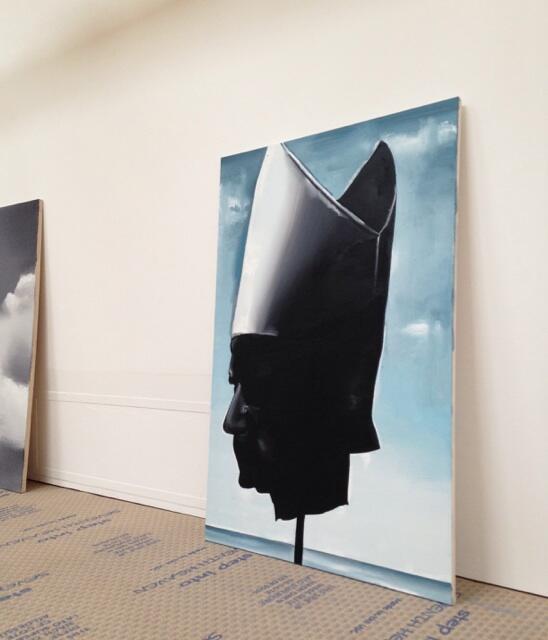
Wilhelm Sasnal’s surrealist children’s show
Wilhelm tells us he's drawing on Hans Christian Andersen and psychedelic band Spacemen 3 in his new work
When the Polish painter and filmmaker Wilhelm Sasnal visited Lismore Castle, the striking, Gothic stately home in County Waterford, Ireland, he immediately thought of fairy tales. The artist had been invited by Lismore Castle Arts to put on an exhibition and, after this initial visit in 2012, Sasnal says in an exclusive interview with Phaidon.com, “I had to do something that referred to the castle.”
So, Sasnal returned to the stories by the 19th Century Danish children’s author, Hans Christian Andersen. He had produced both paintings and films inspired by the Andersen’s stories in the past; however on this occasion he focussed on a certain mood evoked by a set of illustrations published in the Polish edition of Andersen’s complete works that seemed in keeping with the castle setting.
“There was a set of three books, published in the seventies in Poland, illustrated by three different artists,” he explains, “one set of drawings, by [Polish illustrator] Andrzej Strumillo, were very spooky for me as a child. In terms of artistry, the quality was great. Although I didn’t know it at the time, it was a great introduction to art.”

Rather than simply reinterpreting Andersen’s works, as the artist did in his 2008 film Swineherd, Sasnal sought to show painting and films that evoked the atmosphere of Andersen’s stories. “The mood is dreamy, and gloomy,” he explains, “and I find the language he used so old fashion and obsolete, it’s bizarre.”
One painting in the new show, Take Me to the Other Side, is a version of a great lost work by the 19th century German romantic landscape painter Caspar David Friedrich, Autumn Landscape with a Man Gathering Wood. The original painting, depicting a man dragging branches through a field, was destroyed in a fire in the Germany during the 1930s; Sasnal used an image scanned from an old Germany picture book as his source material, yet the painting, despite or perhaps because of this obscure source, loses none of its power.
Another work, untitled (2013), show’s a bicycle seat above a river. The idea came to him while on a cycling tour of Poland last summer. “I was on a ferry, crossing a river, and I kept my bike in front of me.” He singled out the saddle, an object used by Picasso his 1942 sculpture, Bull’s Head, and so “related to surrealism,” Sasnal explains. In his painting, the disembodied seat perhaps brings Magritte to mind more readily. “It looks weird,” he acknowledges, “again its dreamy.”

He also shot and edited two films, featuring his own children, aged 14 and three-and-a-half years old. “The way they play together is a lot like the children’s characters that occur in Andersen’s tales,” he says. Though, again he didn’t impose to rigid a structure; “as with the paintings, I just let them flow their own flow.”
One of these films is set the music of 1980s British psychedelic rock band, Spacemen 3, whose work also provides the title of Sasnal’s show. This pairing of Victorian children’s tales with droning, decidedly adult rock might seem odd, but Sasnal says “Spacemen 3 is a perfect example of such a strange, dreamy atmosphere.” And perhaps this show of antique fairy tales, druggy rock, and lost German romanticism will help some adult visitors return to a place many have consigned to childhood.

For more on the show, which runs until 21 September, go here. For greater insight into Sasnal’s life and work, take a look at our comprehensive career monograph, as well as our collector's edition print.